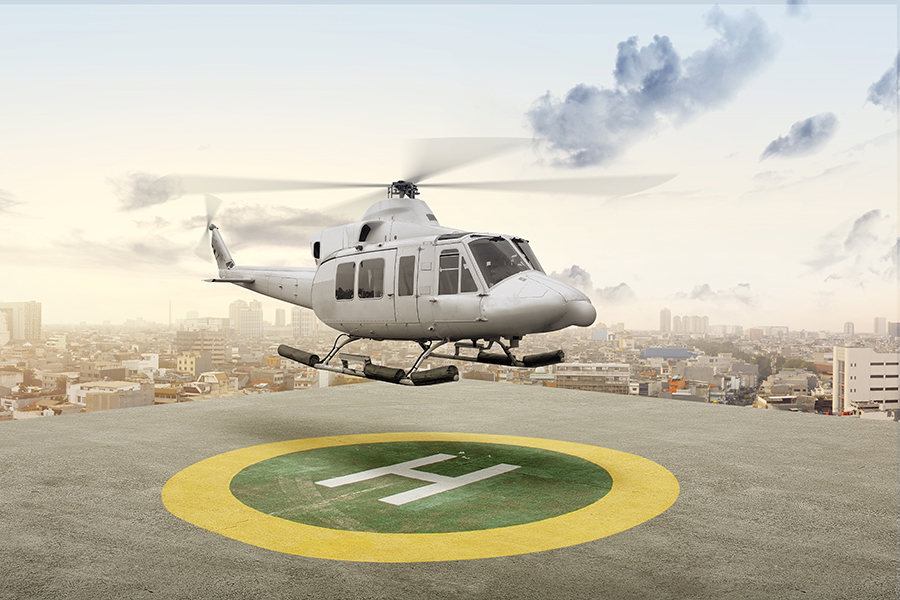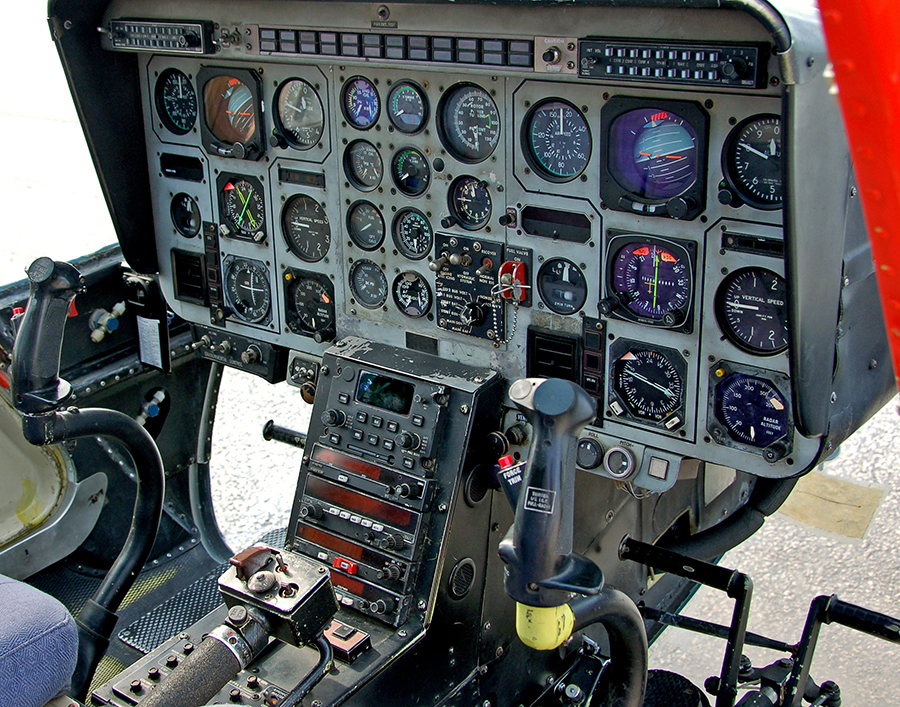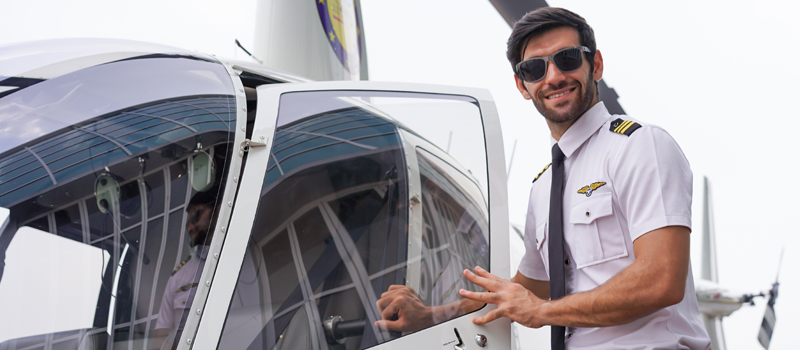-
What Happens When You Try To Hover A Helicopter
-
Learning One Control At A Time
- The Collective
- The Pedals
- The Cyclic
-
Learning to Handle Two Controls Together
- Collective And Pedals
- Collective And Cyclic
- Pedals And Cyclic
-
Learning To Operate All Three Controls Together
-
How To Make The Learning Process Easier – What Works And What Doesn't
-
And Some Final Points...
Hovering a helicopter is very difficult, at least in the beginning. Everyone who has ever flown a helicopter – or tried to – knows this. It is unlike practically anything else. It takes a great deal of time to learn, and at the start can seem absolutely impossible. But it is also tremendous fun. I’m not the only person who became hooked on rotary flying the first time I managed to hover with all three controls. It was only for 35 seconds; my instructor was counting. But that was it; I knew I just had to carry on. I had been a fixed-wing pilot and had gone for a rotary trial lesson just for something different to do, with no intention of continuing. But that 35 seconds changed my life, and I’ve never regretted it.
Hovering a helicopter is commonly described as being like trying to pat your head and rub your stomach at the same time. While this analogy is vastly over-used, it is not inaccurate. The helicopter has three highly sensitive controls, all of which operate differently, and which all affect each other. To further complicate matters, there is a substantial lag between operating each control and the helicopter responding. And to really confuse the new student, there is a different amount of lag for each control. So what does all this mean in practice? Let’s take a look at what actually happens when a novice tries to hover a helicopter.
What Happens When You Try To Hover A Helicopter
The collective controls the helicopter’s height above the ground, by altering the pitch of the main rotor blades. The yaw pedals control the pitch of the tail rotor blades and prevent the helicopter from turning. If you raise the collective, the helicopter will climb. But it will also yaw to the right, in helicopters with counterclockwise rotating rotors, the usual direction for British and American helicopters (note that French and Russian helicopters have clockwise rotating rotors, so things are a bit different). When you climb, you will need to apply the left pedal to keep the aircraft straight. So if you are hovering and feel the helicopter sinking, you raise the collective and apply a bit of left pedal. But there’s a large amount of lag in the collective, so when you raise it, you don’t seem to be climbing. Thinking you haven’t done enough, you raise the collective more, remembering to put in lots of left pedals as you do so. Suddenly the helicopter positively shoots into the air. So you lower the collective…but nothing seems to happen. So you lower it still further. And all of a sudden you’re heading full speed for the ground, and yawing violently – since you forgot that your large movement of the collective downwards means you need a similar amount of pedal.
Meanwhile, there’s the cyclic to worry about. This controls the helicopter’s movement forward, backward, and sideways, by altering the attitude of the rotor disc. This is the hypothetical circular disc formed by the turning rotors. The cyclic actually alters the pitch of each rotor blade by a different amount, but we don’t need to worry about the details of that here. Anyway, the cyclic is by far the most sensitive of the three controls, and the hardest to master. So while you’re sorting out your collective and pedals, the helicopter is probably moving rapidly…in some direction or another, depending on the position of the cyclic. In practice, the machine will now be oscillating wildly and completely out of control. Very soon, your instructor will utter the magic words “I have control”. And somehow, quite miraculously, the errant machine will be quickly brought to a rock-steady hover.
So how do helicopter students learn to hover reliably and accurately? We’ll now take a look at what is involved in learning to hover.
Learning One Control At A Time
Every helicopter student starts off by learning to handle one control at a time. When they can do that proficiently, he or she moves on to two controls together, then finally all three. The instructor handles the other controls so that the helicopter is kept safely in the same place above the ground.
The Collective
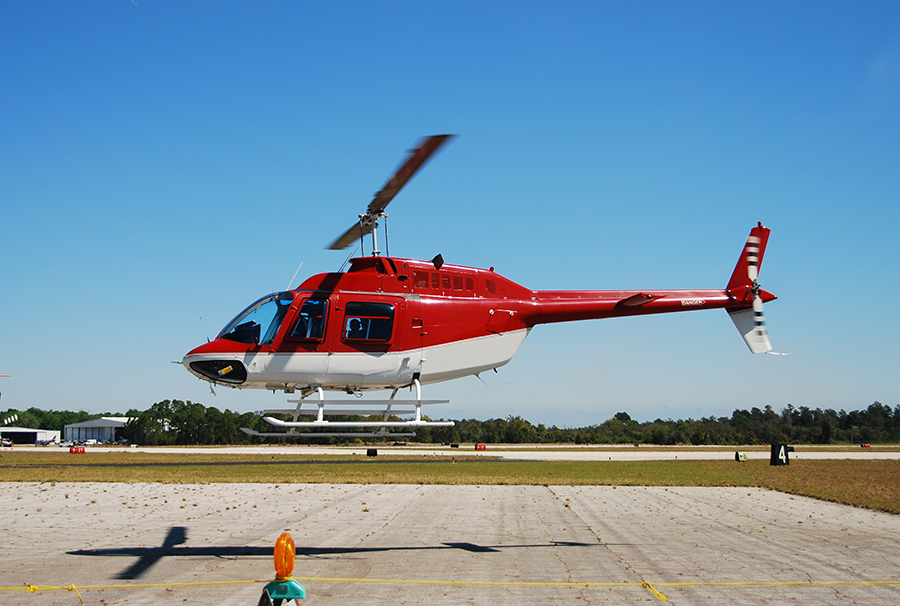
The collective is the easiest of the three helicopter controls and controls height above the ground. You will practice trying to keep the helicopter the same height above the ground and learning to adjust for the lag when you move the collective up or down. Your instructor will manage the cyclic and pedals so that you just have to concentrate on the collective.
The Pedals
After learning to hover using just the cyclic, you will try the pedals. These stop the helicopter from turning. Note that in-flight at altitude they keep the helicopter in balance, which is somewhat different. When learning to hover using the pedals, you will look at a specific point in front of you in the middle distance, and try to keep that point steady in the helicopter windscreen. You will find that you need to react quite quickly to the movements of the helicopter, in order to keep the machine facing the same direction, as the pedals are very sensitive.
The Cyclic
The cyclic is the most difficult of all the helicopter controls. It allows the helicopter to move forwards, backward, and sideways. To keep it steady in one place, you will need to make tiny movements and instant corrections, in order to prevent the helicopter from oscillating in different directions. It takes some people a long time to manage this. But don’t worry; eventually, you will be able to do it.
Learning to Handle Two Controls Together
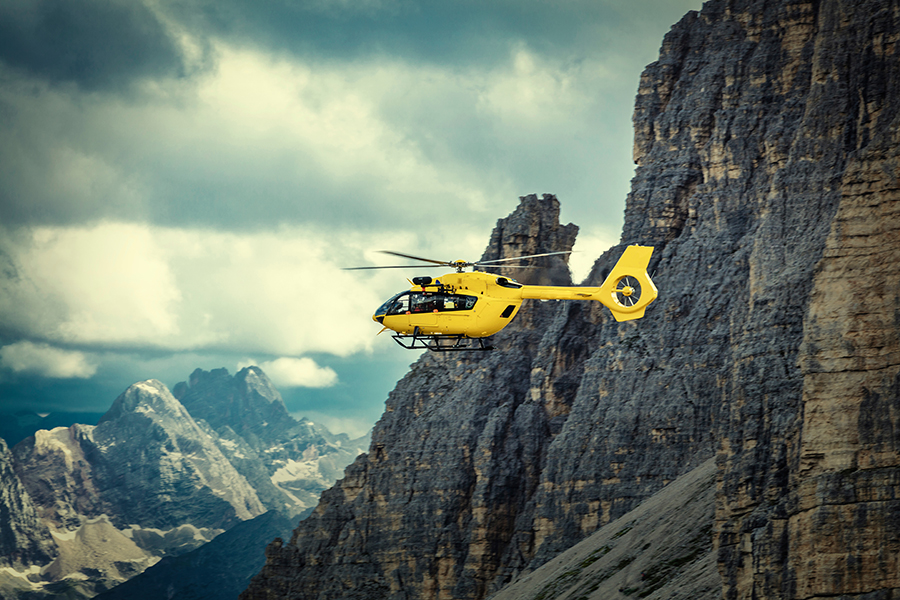
When you are managing individual controls fairly well, though not necessarily perfectly, you will get the opportunity to try two of them together.
Collective And Pedals
The easiest combination of two controls is the collective and pedals, as this means that you leave the difficult cyclic until later. You will find that even this is quite hard in the beginning. You raise the collective, and you also need to apply the left pedal to keep the helicopter straight. Similar corrections are needed when you lower the collective. And if you move the pedals first, you will need to move the collective in order to prevent the helicopter from climbing or descending.
Collective And Cyclic
|Managing the cyclic and collective is more difficult than using the collective and pedals. The theoretical details of what movement affects others, do not help that much; you simply need to be ready to adjust one control when the other is moved. Only making small movements makes the whole thing much easier, as if you make large movements the helicopter can quickly get out of control.
Pedals And Cyclic
The pedals and cyclic together are the most difficult combination of the two controls. Again, you need to be ready to move each control when necessary. And again, making small movements frequently is best. If you leave things until the helicopter is getting well out of control, things are much harder.
Learning To Operate All Three Controls Together
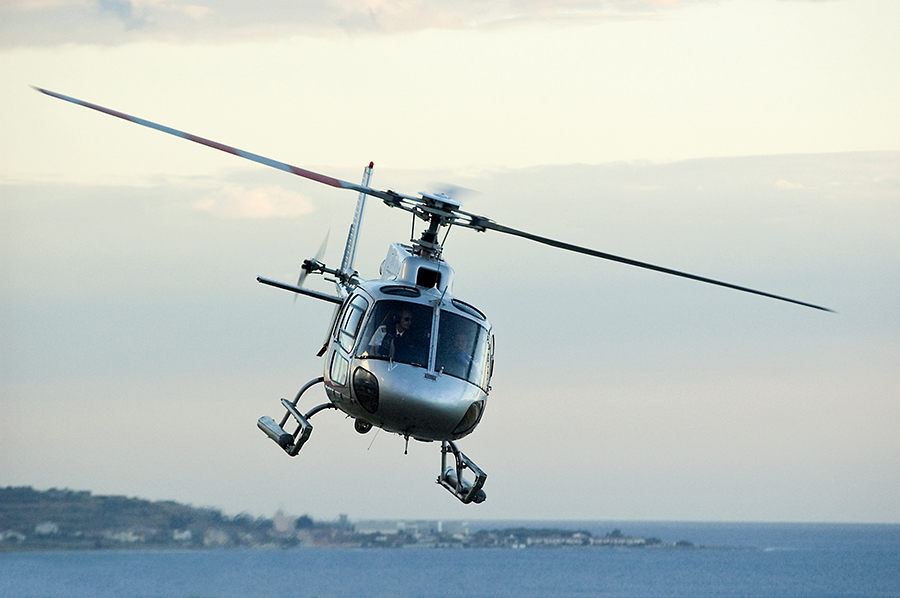
Finally, you will learn to handle all three helicopter controls together. You will have one hand on the cyclic, the other on the collective, and both your feet on the pedals. You will need to coordinate all three controls in order to keep the helicopter in a steady hover, and in the beginning, despite previous practice with individual controls, it can seem very difficult. Some people manage it more easily than others, but some students find it so difficult that they start to believe that it will never be possible to hover well, no matter what they do. So let’s look at some ways to try to make the whole learning-to-hover process easier.
How To Make The Learning Process Easier – What Works And What Doesn’t
The amount of time people take to learn to hover varies tremendously, but for many, it can be an incredibly frustrating experience. Some students try to find a shortcut to learning how to hover, but most of these don’t really help. Let’s look first at what methods don’t work.
- The instructor usually tells the student to relax. This is in theory a good idea, and the would-be helicopter pilot attempts to do so. But trying hard to relax tends to mean that you become more tense, and this makes things much worse.
- A common method of trying to make it all work is to try to centralize all the controls, that is, to find some mid-point at which the helicopter will maintain a steady hover and not move. After all, this is what seems to be happening when the instructor takes over; he or she hardly seems to be moving the controls at all. But simply trying to keep all the controls in the middle and not moving them at all just doesn’t work. The helicopter is dynamically unstable, which means that it won’t simply stay in one position with no input from the pilot. If you don’t move the cyclic at all, the helicopter gets into some rather interesting forward and backward oscillations, which gradually increase.
However, there are a few techniques you can use which can make learning hovering easier and quicker. We’ll take a look at them here.
- The first and most important thing is to really relax, but without actually trying to. It is true that this is very hard to do, but it works. A relaxed attitude somehow makes it easier for new hand/foot-to-brain pathways to develop, in some way that I don’t pretend to understand. The easiest way to do this is to simply stop worrying about whether or not you are making progress. For this reason the people who learn to hover most quickly are often the ones who don’t try too hard. Of course, you have to put in a certain amount of effort, but grim determination most definitely gets in the way of this type of learning. Those who just enjoy the crazy oscillations of early hovering practice, and accept that the process takes time, often pick up hovering most quickly.
- Next, you need to know what to do with your eyes, when you’re trying to hover. It is tempting to look at the ground, since you’re so frighteningly close to it, but this doesn’t work. There are various theories on this, but basically picking a reference point in the distance, and then a feature about 20-30 feet away, seems to work best. That way, you will notice if your chosen points move in relation to each other, and thereby pick up on small deviations and movements of the helicopter. And it’s far, far easier to make small corrections than large ones, since any adjustment of one control will necessitate large movements of the other controls too, and that’s when things usually start to go haywire.
- When learning to hover, “Start large, get smaller”. Most people feel as though they need an area about the size of a football field when they first start learning to hover. Then, gradually, as one of my students put it, “my fields are getting smaller”. Then will come that magic moment when…you’ve got it. You can hover!
- Dealing with wind is important when hovering. Hovering into wind may present little difficulty to you after a bit of practice. But if you turn out of wind, you’ll probably find that the helicopter suddenly shoots off downwind, and you’ll find that you need to move the cyclic towards the wind direction. And with the wind from the left, the tail rotor is affected, and you need react even faster with your use of the pedals. And in a strong-ish wind – maybe 15 knots or so – hovering out of wind can become really difficult for the low hours pilot.
- Ultimately, it all comes down to practice. Hovering is a bit like learning to ride a bike; it seems impossible until you can do it, and then you wonder what on earth was so difficult. Hovering is really no different from learning to drive a car, or ride a horse, or play football, or learn a martial art, or indeed any other practical skill. In one sense, an instructor cannot teach you to hover; he or she can merely prevent you from killing yourself while you learn.
And Some Final Points…
Gradually, as with all newly acquired skills, you will become better and better at hovering. You will learn to hover-taxi or move slowly around the airfield in the hover. You will learn to hover-taxi sideways and backward. You will learn to turn the helicopter on the spot without it shooting off downwind. And you will combine all these skills by hovering around the tail – putting your helicopter’s tail in a certain place, and moving in a circle around it. Why would you want to do that? Well, if you land in a small area surrounded by obstacles, you need to know what is all around you. So you protect your delicate tail rotor by putting it in the center, then checking out the whole confined area.
There is no doubt that hovering a helicopter is difficult, on an ongoing basis. But as I said at the beginning, it is also tremendously enjoyable. Why? Because if you like hands-on flying, this is about as hands-on as it gets. You get into an airplane and fly it, but you feel like you’ve strapped on the helicopter almost as an extension of yourself. You can do practically anything, limited only by your own skill.
My car has a sticker saying ‘To Fly is Human, to Hover…Divine’. I still agree with the sentiments, and I think that in time you will too.

